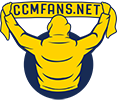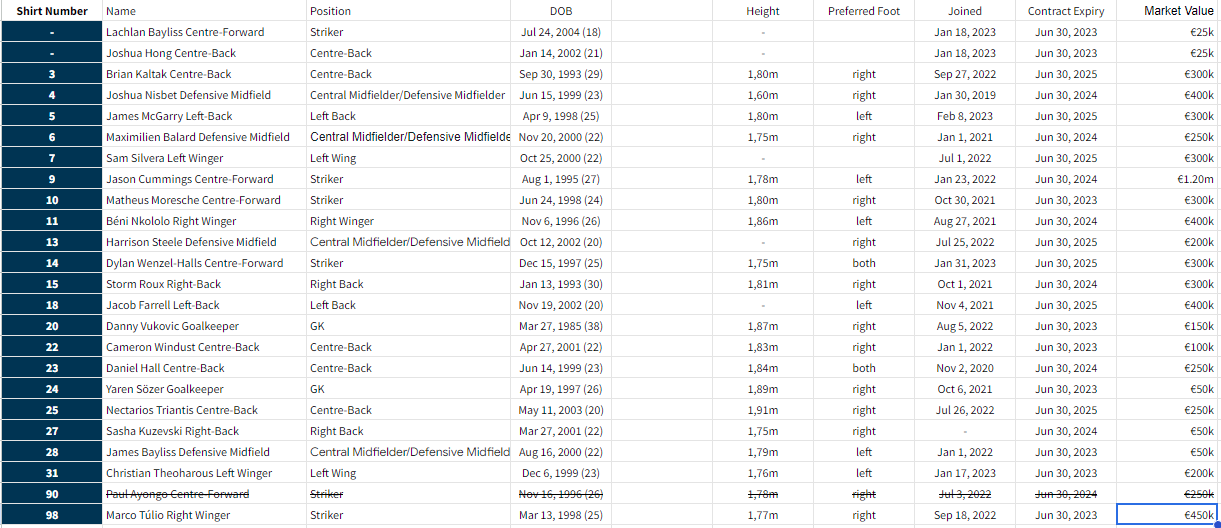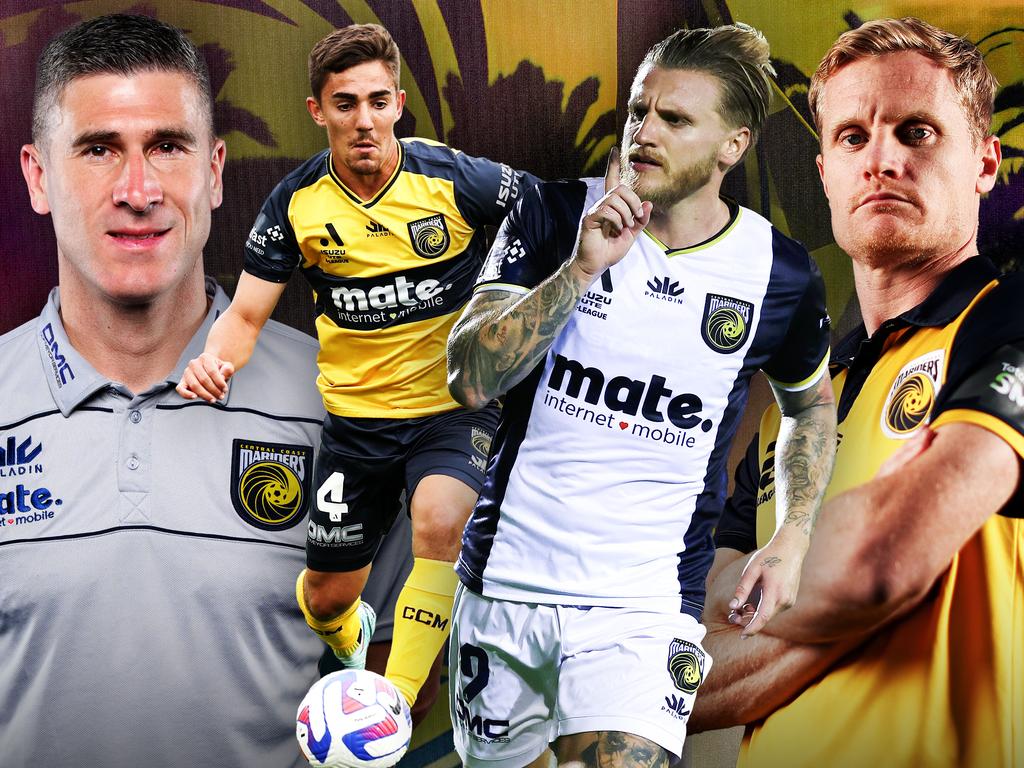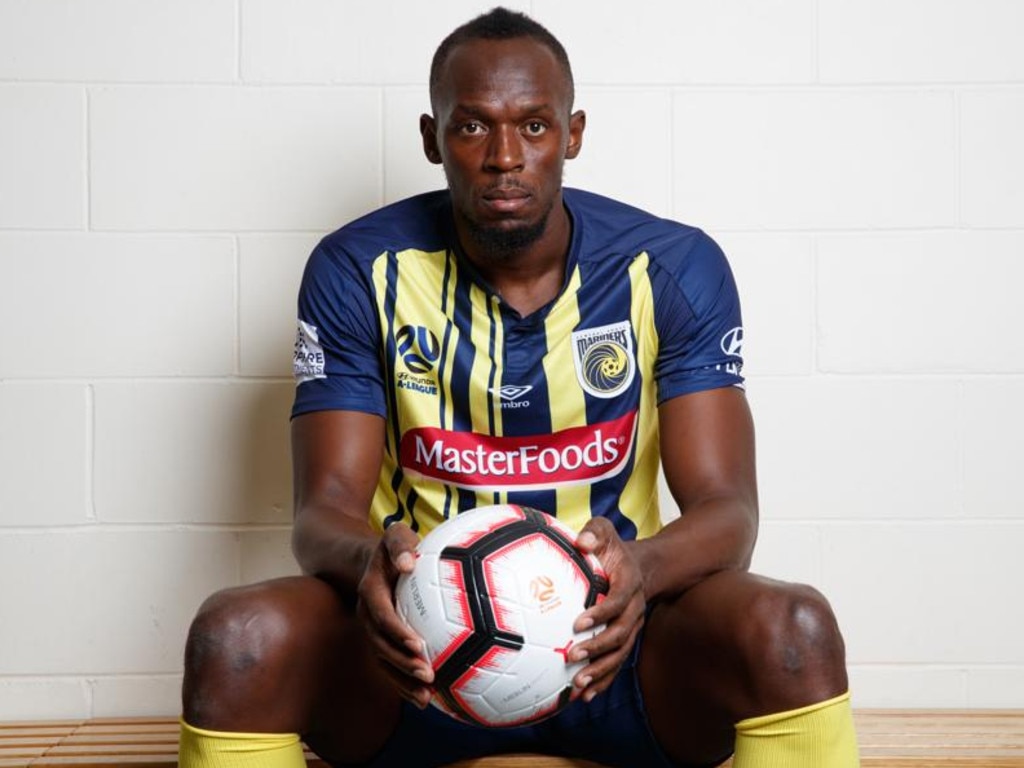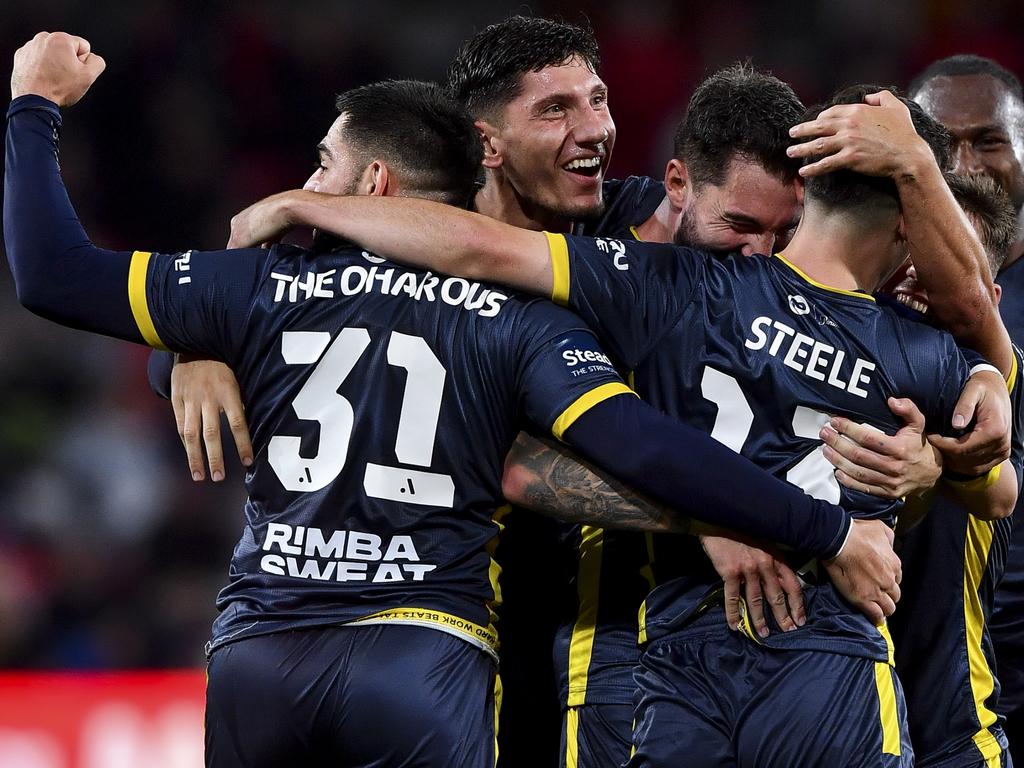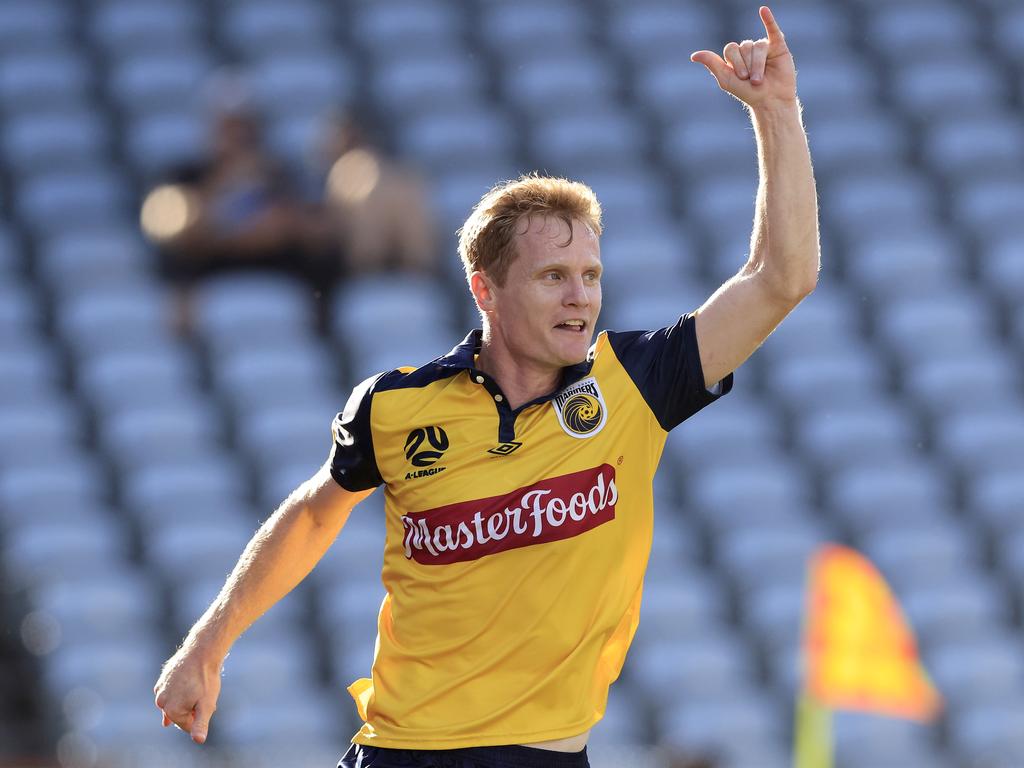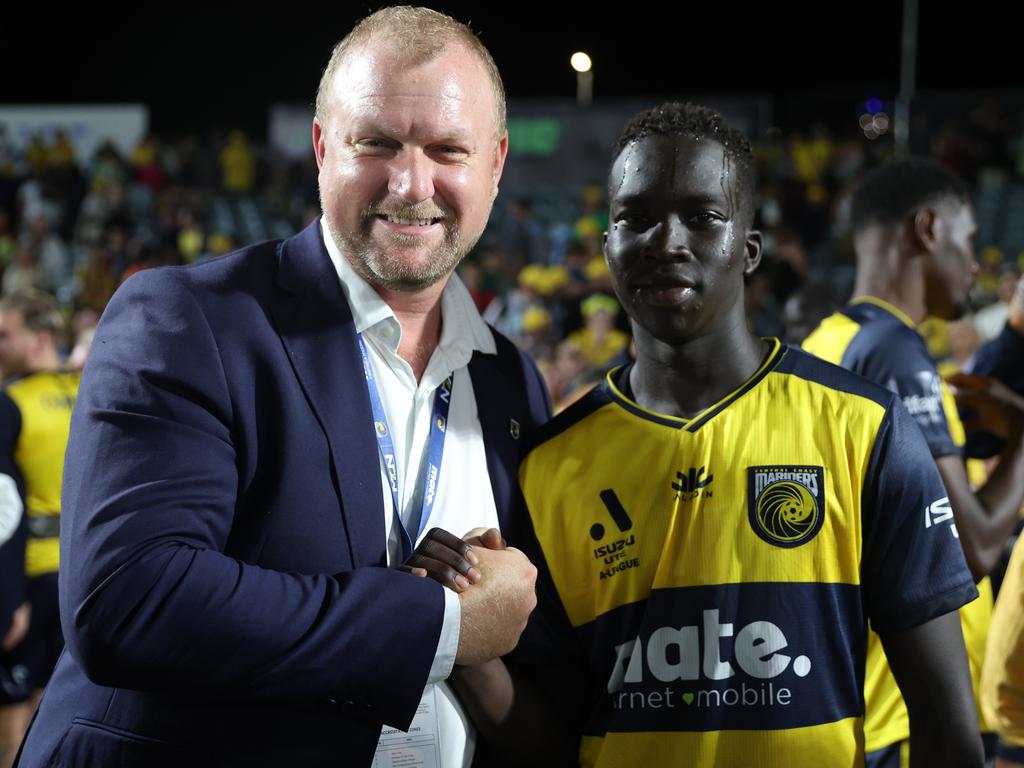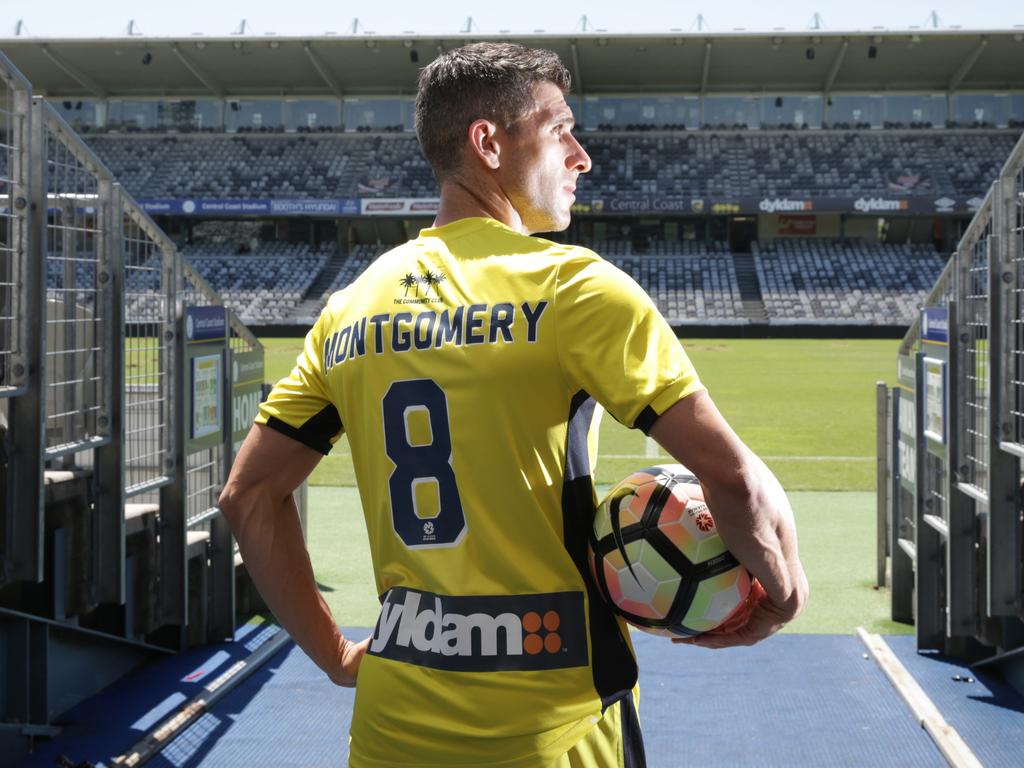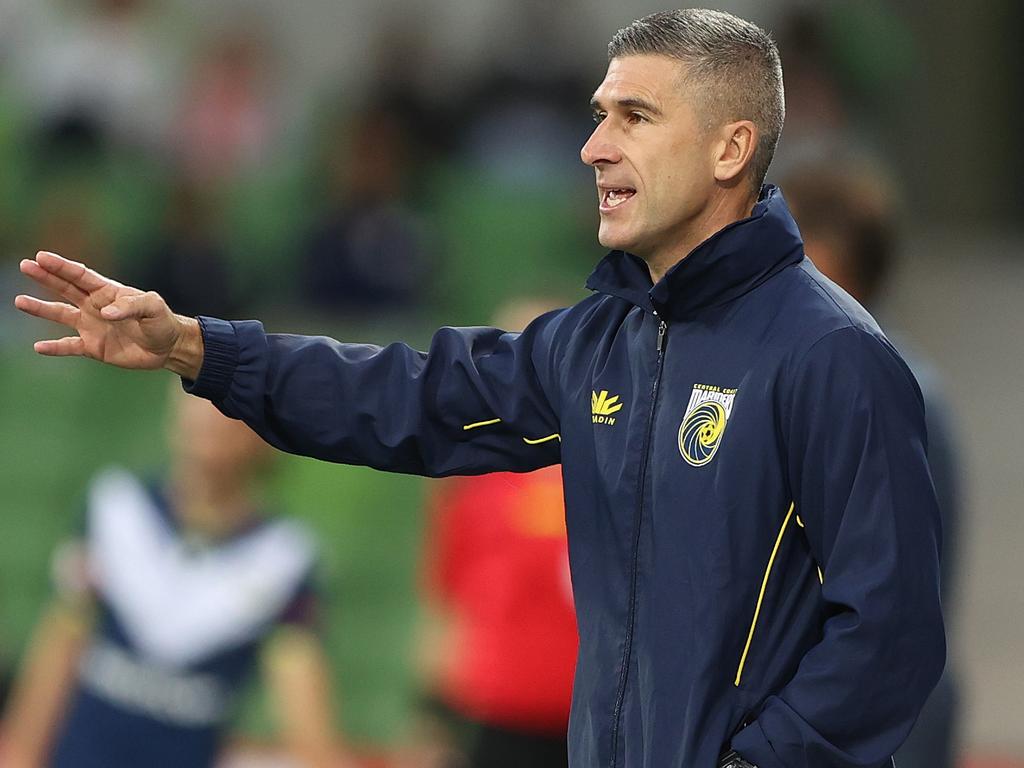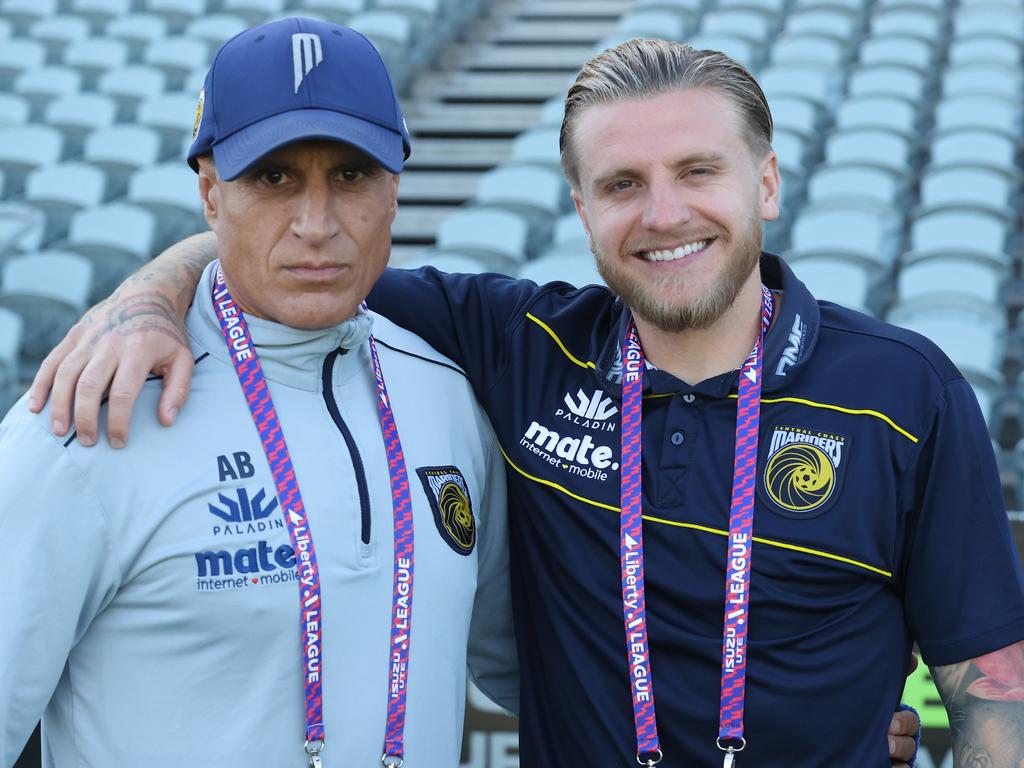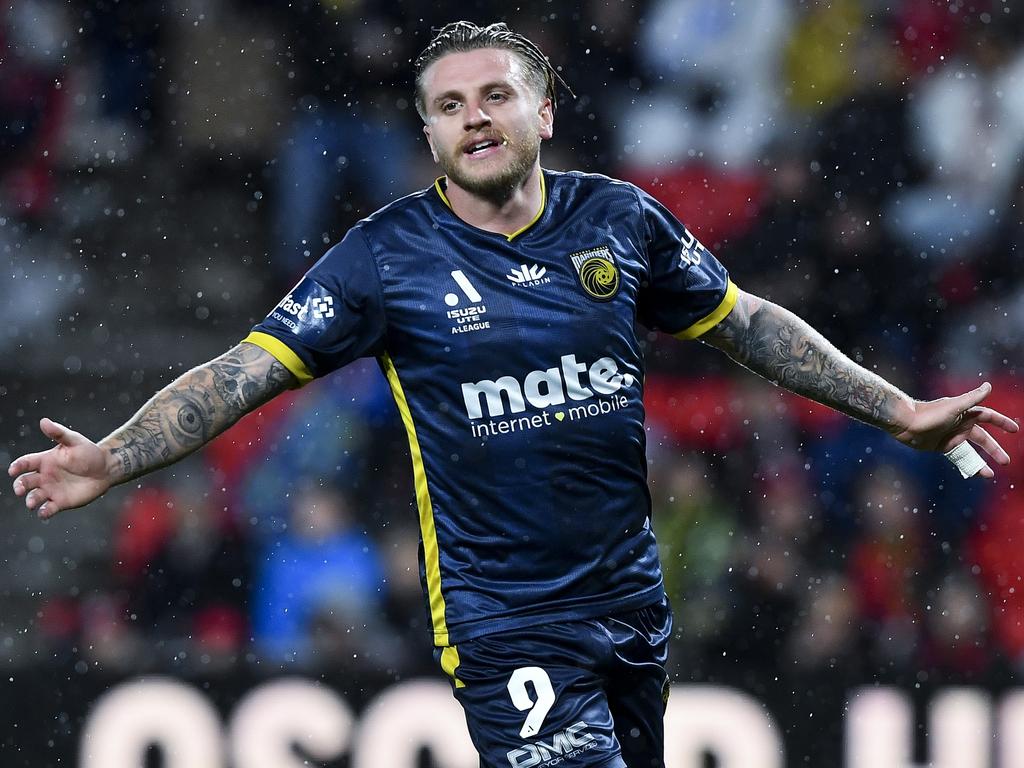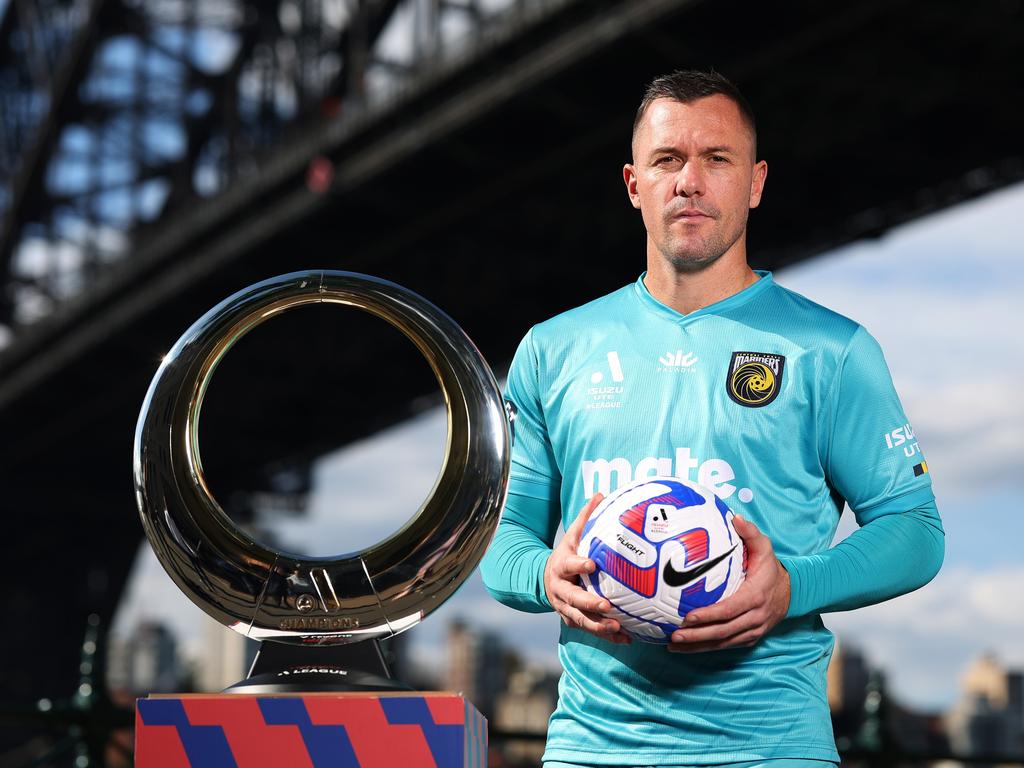Central Coast Mariners are thriving despite low budget, modest facilities and a period of abject mediocrity
Forget Ted Lasso. The low budget Central Coast Mariners are the best story in sport and, writes ADAM PEACOCK, more is to come.
 Adam Peacock
Adam Peacock
Follow
@adampeacock3
6 min read
May 12, 2023 - 6:00AM
A change in philosophy has turned A-League underdog Central Coast Mariners into a competition powerhouse again.
It could be argued, with great conviction, that the Central Coast Mariners were the worst professional sporting club in Australia three years ago.
They had claimed four wooden spoons in six seasons.
They had won just 26 games in that span.
Usain Bolt had a trial which turned to tribulation. Others came from overseas and treated it like a holiday.
The Mariners stood for one thing: mediocrity.
“I don’t know if there was a rock bottom moment,” Mariners chief executive Shaun Mielekamp tells CODE Sports.
“We got our mining drill and went to the core of the earth.”
The Usain Bolt days feel a long time ago. Picture: David Swift
Remarkably, it has all changed.
The Mariners have won 37 regular season games in three seasons, all on the smell of an oily rag. Only Melbourne City (45), owned by oil-rich princes, has more.
The Mariners are now a destination club.
They promote youngsters, produce Socceroos and are on the verge of an A-League Men’s Championship.
Just don’t call it a miracle.
The Mariners are flying again after years of hardship and mediocrity. Picture: Mark Brake/Getty Images
*****
By the basic tenets of capitalism, the Mariners should not be this good.
They are winning a fashion parade by shopping at Vinnies.
Portuguese star Nani earned more this season than the entire Mariners squad, who are underpinned by the A-League’s most underused commodity: young players.
This season, 50 per cent of the Mariners’ playing minutes went to Australians under the age of 23.
“You can see the younger ones who have come through here, at many other clubs they wouldn’t get a look in,” Mariners sporting director Matt Simon tells CODE Sports.
“We are No.1 in Asia for giving minutes to under 23 players from the academy. And No.17 in the world.”
Club legend Matt Simon has helped grow the Mariners in retirement as the club’s sporting director. Picture: Mark Evans/Getty Images
Simon, who retired earlier this year and was thrust into his new role as sporting director, played through the good, bad and ugly at the Mariners.
Now he is buzzing. And so is his phone.
Young players want to go to the Mariners, sensing a chance. Last season, they attracted promising Western Sydney centre back Nectar Triantis, who couldn’t see a way into the Wanderers first team. Triantis is now the subject of overseas interest.
But it’s one thing to give kids a chance. They have to be ready.
Mielekamp says the production line is the Mariners’ lifeblood.
“The academy underpins everything that happens at the club,” Mielekamp says of the cohort of seven teams down to the under 13s level.
Chief executive Shaun Mielekamp with former Mariners’ starlet Garang Kuol. Picture: Scott Gardiner/Getty Images
Mielekamp pinpoints one day in 2020 when he felt the club broke free of mediocrity: when Nick Montgomery coached the Mariners youth team to a state league NPL title.
“There was no belief. We were trying Hail Mary’s with things like the Usain Bolt experiment,” Mielekamp says.
“But when the academy players developed a winning mentality, that’s when it changed.”
A season after that success, Montgomery was promoted to A-League head coach when Alen Stajcic left after finishing third in 2021.
“Everyone told me not to take the job, it will be career suicide,” Montgomery says.
Montgomery had eight spots to fill in his initial squad and promoted many of the kids whom he coached to that 2020 NPL title.
Nine of the 16 who played that day have since made A-League debuts. It’s a phenomenal strike rate.
“I have full confidence in the young players and think they are as good as any players in the competition,” Montgomery says.
Montgomery continues to build on his own long history with the Mariners. Picture: Mark Scott
Not many others think that way.
Clubs with much bigger budgets – like Sydney FC, Melbourne Victory and Western United – rely more on experienced players, blocking the pathway for many in their academies.
Melbourne City and Adelaide do it well, too. Along with the Mariners, they have promoted youth, and those clubs coincidentally finished in spots one, two and three on the ladder this season.
Results with kids. It can be done.
Montgomery takes immense pride in helping youngsters evolve.
Along with assistant Sergio Raimundo, who worked at Portuguese talent factory Benfica, Montgomery brought in physical and mental development mechanisms to the academy. A sports psychologist, Ezio Mormille, was paid only for travel expenses. A local pastor, Paul, volunteers with player support. Both have been crucial in resetting youngsters’ mindsets.
That blueprint now flows through the entire club.
“This club is built on hard work and being the underdog,” Montgomery says. “We’ve got good people here for the right reasons and it’s definitely not for money, that’s for sure.”
Focusing on the development of youngsters has been Montgomery’s key mantra. Picture: Robert Cianflone/Getty Images
*****
The Mariners’ training base, just off the highway north of Gosford, sums up the club.
“It’s imperfect, but it’s perfect for us,” club legend Simon says.
The pitch is an uneven surface that floods easily.
Near one sideline is a shipping container, which has been converted into a physio room. Nearby are some humble offices which lead to the gym, a small alleyway of equipment where one voice is constant.
That belongs to former Socceroo Andy Bernal, who has been to heaven, hell and back in a remarkable life.
Bernal played professionally in Spain and England, became David Beckham’s right-hand man at Real Madrid, then plunged into drug addiction.
He survived and is now thriving. And when Canberra businessman Richard Peil took over as Mariners owner, Bernal came as part of the package.
Bernal’s official title is “head of athlete development”, although he describes it slightly differently.
“According to Monty, I’m the first vibes manager in football, but I like that!” Bernal tells CODE Sports. “Part of educating and mentoring these young men that everyone is as happy as they can be.
“You can bring a negative here in the morning and within five minutes, the coaching staff and players will turn that into a positive.”
Chief vibes manager Andy Bernal (L) with Jason Cummings. Picture: Scott Gardiner/Getty Images
The Mariners’ makeshift gym is full of basic equipment, with additional mod-cons like ice baths. Simple but effective.
It’s all the Mariners need.
“Don’t have to have a chin-up bar in the most beautiful gym in the world. It’s still just a chin-up,” Bernal points out, as he bounces around the gym, cajoling players with rampant enthusiasm.
Bernal playfully starts a wrestle with Christian Theoharous, a talented winger who is back in Australia after a move to Germany that didn’t work out.
Theoharous is on his way home, but not before one last hit of Bernal-ism.
“By the time you’re done here, son,” Bernal whispers intently, “you’ll be a f--king machine!”
Dotted through the last three years are remarkable stories of success. The Kuol brothers, Alou and Garang, were given a chance by the Mariners when others wouldn’t and secured life-changing overseas deals.
Jason Cummings, the cult hero who came from Scotland, arrived with a reputation for havoc before the Mariners straightened him out to make the World Cup squad.
Cummings may move on after this season, but he’ll get a big deal elsewhere and the Mariners will get a transfer fee.
Win, win, win.
Goals from Jason Cummings have been a regularity on the Central Coast. Picture: Mark Brake/Getty Images
And then there’s Josh Nisbet, all 160cm of him. Told at every turn he was not big enough to play professionally, Nisbet willed himself to a career. He is now known across the league as a central midfielder of endless energy, who last week won the Mariners Medal as best and fairest.
“It’s not the building, the gym, the surface you’re playing on,” Nisbet says about the Mariners success.
“It’s the environment, the staff, the office staff, volunteers. It’s a family feel. Everybody has your back, regardless of what happens.”
*****
The immediate goal is to replicate what Graham Arnold did with the Mariners a decade ago and win a grand final.
Arnold also did it with next to no budget, sometimes paying for team buses to get to games and covering players’ rent money out of his own pocket.
It’s not that bad financially now but Mielekamp concedes that with success comes an upgrading of expectations.
“Previously we had an excuse, now there are no excuses,” Mielekamp says of the commercial side of the club.
No club in the A-League makes money but with new owner Peil, the Mariners continue to hunt ways to get bigger and better.
“We’re continuing to sustain losses and with the growth we have to make sure the losses don’t grow,” Mielekamp says.
“It will be the player sales that allows us to survive.”
The ultimate goal of winning a grand final is again within reach for the Central Coast Mariners. Picture: Mark Metcalfe/Getty Images
It’s a challenge that Montgomery relishes.
“It takes planning. Have to think ahead,” he says. “We’ve got a couple of sales overseas coming and a couple who will move to other A-League clubs. For us, that success is helping players have a career. We take pride in that.
“What’s possible, though, is that we can compete with everybody.”
More Coverage

“It’s a club not talking about the past anymore,” Mielekamp adds.
“We’re talking about the future. There’s belief in the club across the board
